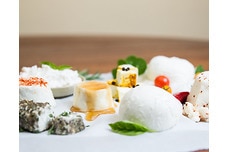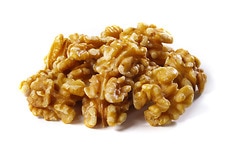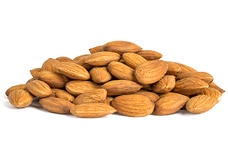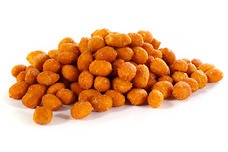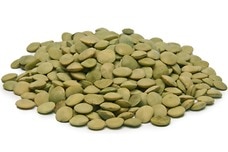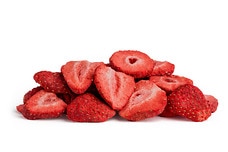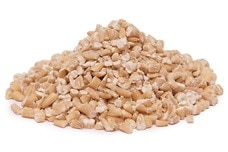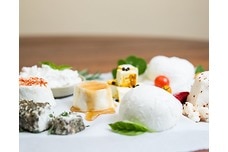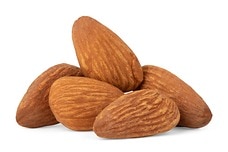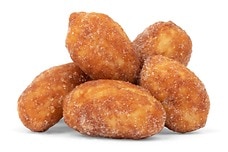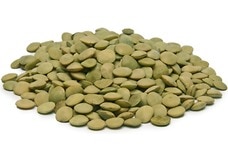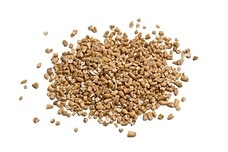How Changing Your Diet Can Help Eliminate Body Fat
Fats, or lipids, are one of three macronutrients that the human body uses for energy (carbohydrates and proteins are the other two). Although fats get a bad rap for being unhealthy, their health properties depend on the type of fat you eat. Regardless of the fat type, however, each fat molecule contains more calories than other macronutrients. One lipid molecule contains 9 calories, while each carbohydrate or protein molecule contains 4. This means that eating a large amount of fat causes your body to convert more energy into body fat. Eating foods with fat burning powers can help you avoid weight gain and decrease your risk of chronic health conditions.
Fat Burning Foods
Understanding Different Types of Fats
We often treat “fat” as a monolithic category that includes exclusively harmful molecules. However, there are four major classes of fats used by the human body: saturated, trans, monounsaturated, and polyunsaturated fats (Harvard T.H. Chan School of Public Health, 2015). Saturated fats are often found in animal products, such as dairy products, beef, and skin-on chicken. Trans fats are also naturally found in animal products in small amounts, but they are much more prevalent in processed foods such as baked goods, crackers, or fried foods. Eating a diet high in saturated and trans fats has been associated with elevated risk of cardiovascular disease.
The other two types of fat, monounsaturated and polyunsaturated fat, are considered “healthy” fats. These are the fats that are much more commonly found in plant products. Monounsaturated and polyunsaturated fats tend to lower levels of unhealthy LDL cholesterol and increase levels of healthy HDL cholesterol. As a result, they have a beneficial effect on cardiovascular health.
How the Body Burns Fat
All fat molecules are hydrophobic, meaning that they cannot dissolve in water or in the blood. As a result, they must be transported via hydrophilic (water-loving) structures called lipoproteins. When you eat fat-containing foods, they are broken down by enzymes in the stomach and small intestine; the resulting fatty acids are absorbed by the small intestine, repackaged, and transported via lipoproteins through the blood (Goldberg, 2015).
Your body depends on fats for a variety of physiological functions. Without fats, we would die. The following list enumerates just some of the roles that fats fulfill in the body (Ask Dr. Sears, n.d.):
- Create new hormones
- Act as an energy source for cellular actions
- Constitute structural components of neurons, including the myelin sheath that speeds up neurotransmission
- Facilitate the body’s ability to use vitamins, such as vitamins A, D, E, and K
- Keep skin healthy and moist
- Maintain body temperature
- Form a protective cushion around your organs
When your body has excess fatty acids being transported through the blood, it saves the fats for later. Fat molecules are packaged up and placed into adipose cells, the cells that form body fat. Then, when energy is needed at a future date, the adipose cells release these triglycerides for use as energy.
Nutrients that Promote Fat Metabolism
When trying to burn fat, part of the equation comes down to calories. Your body requires a certain number of calories simply to maintain itself. This is known as your resting metabolic rate. If you burn more calories than your body uses, you will lose weight. In contrast, if you take in more calories than your body burns, you will gain weight. One pound of body fat is equivalent to 3,500 calories, meaning that you need to create a 500 calorie deficit each day to lose one pound of fat per week (Mayo Clinic, 2015). This could come through eating fewer calories or by expending more through exercise.
In general, your body prioritizes carbohydrates as an energy source when they are available. Only when carbohydrates are unavailable will the body begin burning fat. As a result, it can be helpful to follow these general nutrition guidelines to stimulate fat burning (Gillies, 2016):
- Eat more protein. Foods that are high in protein increase your feelings of satiety. This means that you will be less likely to indulge in carbohydrate-rich foods when cravings strike. Eating lean protein is a good way to promote fat metabolism.
- Consume healthy fats. Healthy monounsaturated and polyunsaturated fats actually stimulate fat metabolism. In fact, a diet rich in monounsaturated fats has been shown to reduce the amount of belly fat, which can be particularly harmful for long-term health (Fitness Magazine, 2014).
- Avoid refined carbohydrates. Refined carbohydrates are your body’s favorite source of energy. These shorter carbohydrate chains can easily be broken down into their component parts, providing the body with a simple source of energy to fuel muscle actions and other physiological activities. Although eating simple carbohydrates just before a workout could help you stay energized during your workout, you are better off avoiding refined carbs whenever possible. This forces your body to burn fat molecules for energy instead (Gillies, 2016).
- Prioritize high-fiber foods. Getting plenty of fiber is associated with fat burning and loss of belly fat. In a 2011 study, researchers found that eating 10 additional grams of soluble fiber per day was associated with a 3.7% reduction in visceral fat over five years (Wake Forest Baptist Medical Center, 2011).
Foods with Fat Burning Power
So, with those nutritional guidelines in mind, what foods should you prioritize for optimal fat burning? Consider incorporating the following foods into your diet to burn more fat (Health, 2015):
- Whole grains. Not only are whole grains rich in fiber, but they also contain complex carbohydrates that take more energy for your body to break down. Try swapping brown rice for white rice, whole wheat flour for all purpose, or steel cut oats in lieu of sugary breakfast cereals.
- Nuts. Nuts are an excellent source of protein and healthy fats. For example, peanuts are a rich source of monounsaturated fats that can reduce belly fat (Gillies, 2016). Keep a few handfuls of almonds, peanuts, walnuts, or pistachios at your desk for a mid-afternoon pick-me-up. Alternatively, swap almond flour for all purpose flour when baking, or sprinkle sliced or chopped nuts atop your morning smoothie.
- Lean meats. Lean meats are low in unhealthy saturated fats while providing an excellent source of protein to promote fat burning. Stick with skinless chicken breasts, lean beef, or ground turkey.
- Low-fat dairy products. Eating dairy products, such as milk, yogurt, and cheese, gives you plenty of vitamin D and calcium. These nutrients are thought to help you convert excess energy to muscle instead of fat (Rosenfeld, 2012).
- Lentils. Lentils are an excellent vegetarian source of protein, promoting satiety and fat burning. They are also a source of iron.
- Tea. Drinking green tea is linked to an acceleration of fat burning and facilitated weight loss. Enjoy a hot mug of green tea or stir matcha green tea powder into smoothies to enjoy its benefits.
Beyond Nutrition: How to Accelerate Fat Burning with Exercise
Of course, diet alone cannot effectively stimulate fat metabolism. Combining fat burning foods with plenty of exercise is the best way to slash your body fat. Exercising in the so-called “fat burning” zone burns a greater amount of fat as a proportion of total calories than other exercise intensity levels; however, more net fat calories are burned with high intensity workouts (Cosgrove, n.d.). To achieve this fat burning effect, incorporate plenty of aerobic activity into your routine. This might include cycling, swimming, running, or dancing. Also remember to perform high-intensity interval training at least two days per week, as this type of exercise has been shown to promote fat metabolism and weight loss (Mayo Clinic, 2015).
Recipes to Burn Fat
These simple recipes are balanced to focus on healthy fats, fiber, and other nutrients that facilitate the metabolism of that extra flab. Add these foods to your daily menu for a delectable way to get slim in a safe and healthy way.
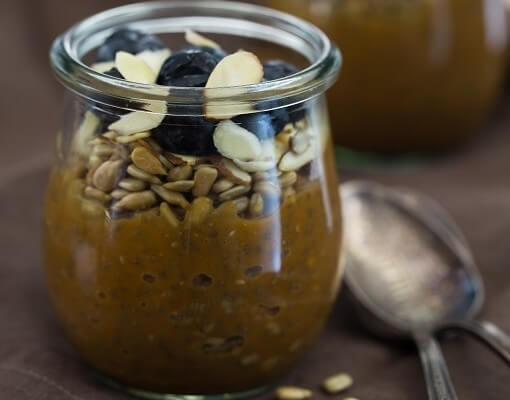
Pumpkin Chia Seed Pudding Recipe
This delectable breakfast pudding offers a palate-pleasing supply of unsaturated fats and fiber to help you get lean. The pumpkin puree and dairy-based base is topped with nuts and seeds to facilitate a healthy fat-burning metabolism.
Ingredients: Milk, pumpkin puree, chia seeds, maple syrup, pumpkin spice, sunflower seeds, sliced almonds, fresh blueberries.
Total Time: 10 minutes
| Yield: 4 servings

Matcha Green Tea Smoothie Recipe {gluten-free, vegan}
Add the benefits of green tea to your daily intake with this scrumptious smoothie. Not only does this formulation offer a healthy supply of matcha, but it also offers a blend of healthy fats, protein, and fiber to keep you feeling satisfied.
Ingredients: Almond milk, matcha green tea powder, hemp protein powder, almond flour, dried mulberries, pitted dates, flaxseed meal, ice cubes, stevia powder.
Total Time: 5 minutes
| Yield: 4 smoothies
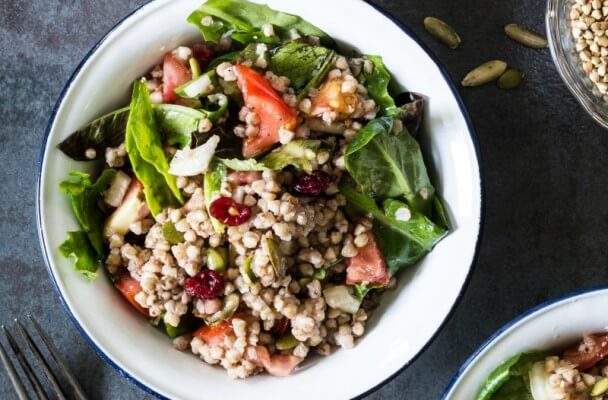
Buckwheat Salad Recipe
Buckwheat tastes and feels like a grain, but this plant-based food actually supplies the slow-burning starches without the gluten or the high glycemic load. Adding heft to your salad with this scrumptious food results in a filling meal that won’t pack on the pounds.
Ingredients: Mixed greens, buckwheat, tomatoes, onion, raw pumpkin seeds, dried cranberries, rice wine vinegar, sesame oil, salt, black pepper.
Total Time: 15 minutes
| Yield: 5 servings
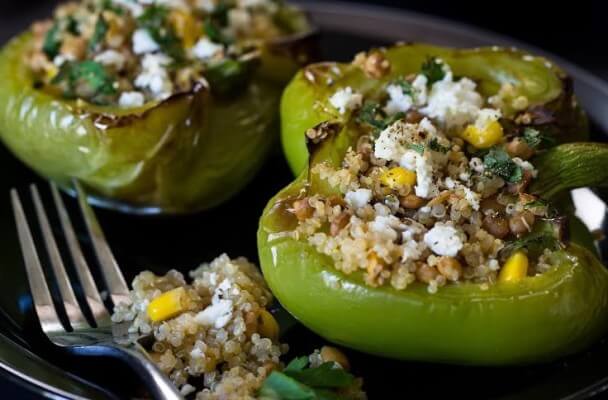
Quinoa Stuffed Peppers Recipe {gluten-free}
A delectable dinner dish that includes lentils and dairy, swap out the feta for cottage cheese or ricotta to reduce the fat content of this delectable dish. In any event, the meal is well-balanced to supply the nutrients you need- including both fiber and protein to fill you up quick!
Ingredients: Quinoa, green bell peppers, canned lentils, fresh spinach, feta cheese, frozen corn (thawed), salt, black pepper.
Total Time: 40 minutes
| Yield: 6 servings (8 half-peppers)
Fat Burning Products
The following foods and ingredients were selected due to their nutritional content, which includes either plenty of unsaturated fats, a small ratio of simple sugars to complex starches, or another desirable proportion of protein, fiber and healthy fats to less healthy components. For more on fat-burning foods, check out our 6 favorite fat-burning foods here.
Healthy Eating
- Healthy Snacks
- Healthy Highlights
- 5 Uses for Cacao Powder
- 5 Ways to Eat Farro
- 6 Best Gluten-Free Foods
- Alcohol and the Body
- Almond Flour Recipes
- Anti-Aging Superfoods
- Beat the Afternoon Slump
- Benefits of a Plant-Based Diet
- Benefits of Baobab
- Benefits of Cashews
- Benefits of Coconut Oil for Hair
- Benefits of Coconuts
- Benefits of Dates
- Benefits of Fenugreek
- Benefits of Garcinia Cambogia
- Benefits of Goji Berries
- Benefits of Kale Chips
- Benefits of Monk Fruit Sweetener
- Benefits of Peanuts
- Benefits of Pecans
- Benefits of Pistachios
- Benefits of Pumpkin Seeds
- Benefits of Spelt Flour
- Benefits of Steel Cut Oats
- Benefits of Sunflower Seeds
- Benefits of Tiger Nuts
- Benefits of Turmeric
- Benefits of Walnuts
- Benefits of Wheatgrass
- Best Food Fads
- Cacao vs Cocoa
- Caffeine-Free Energy Foods
- Chocolate That's Good for You
- Diet vs. Exercise
- Fat Burning Foods
- Food Myths Debunked
- Foods for Bone Density
- Foods for Colon Health
- Foods for Healthy Hair
- Foods for Healthy Skin
- Foods to Help Sleep
- Foods to Reduce Stress
- Green Tea Benefits
- Healthy Baking Flours
- Heart Healthy Habits
- High Protein Health Risks
- How to Boost Your Metabolism
- How to Lose Weight While Aging
- How to Throw a Vegan BBQ
- Kaniwa vs Quinoa
- Little Health Foods
- Low-Carb: Fad or Friend?
- Making Healthier Desserts
- Mediterranean Diet Meal Plan
- Natural Beauty Products
- Nuts for Weight Loss
- Preparing Vegan Meals
- Preventing Muscle Degeneration
- Rare Superfoods
- Reduce Sugar Intake
- Save Time By Going Vegan
- Smarter Snack Swaps
- Smoothie Ingredients
- Soy Protein vs Whey Protein
- Starting a Plant-Based Diet
- Steel Cut vs Rolled Oats
- Sugar Substitutes
- Vegan Proteins
- Vegan Substitutions for Fall Recipes
- Why Go Vegan
- Healthy Meals
- Healthy Recipes
- Sports Nutrition
- Vitamins, Minerals & Nutrients

